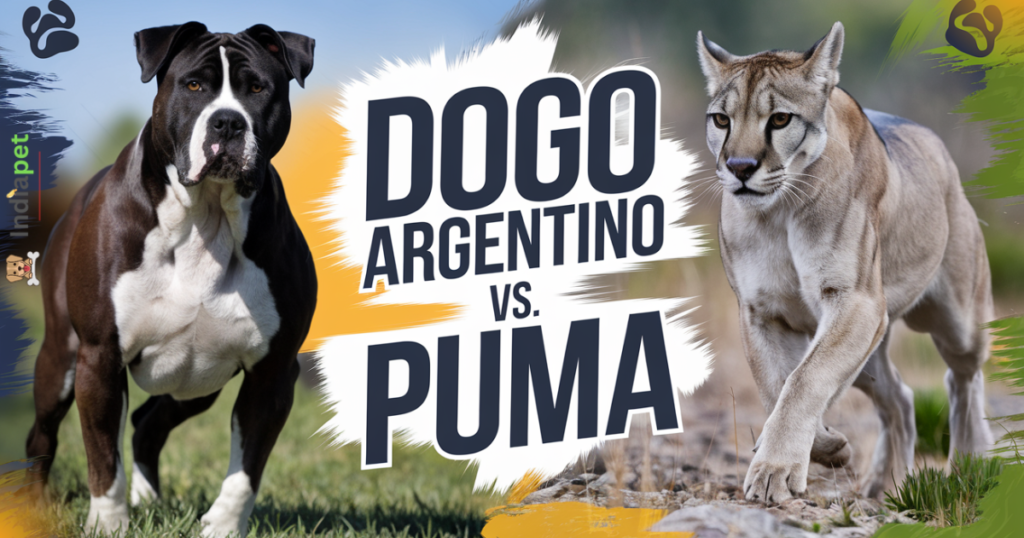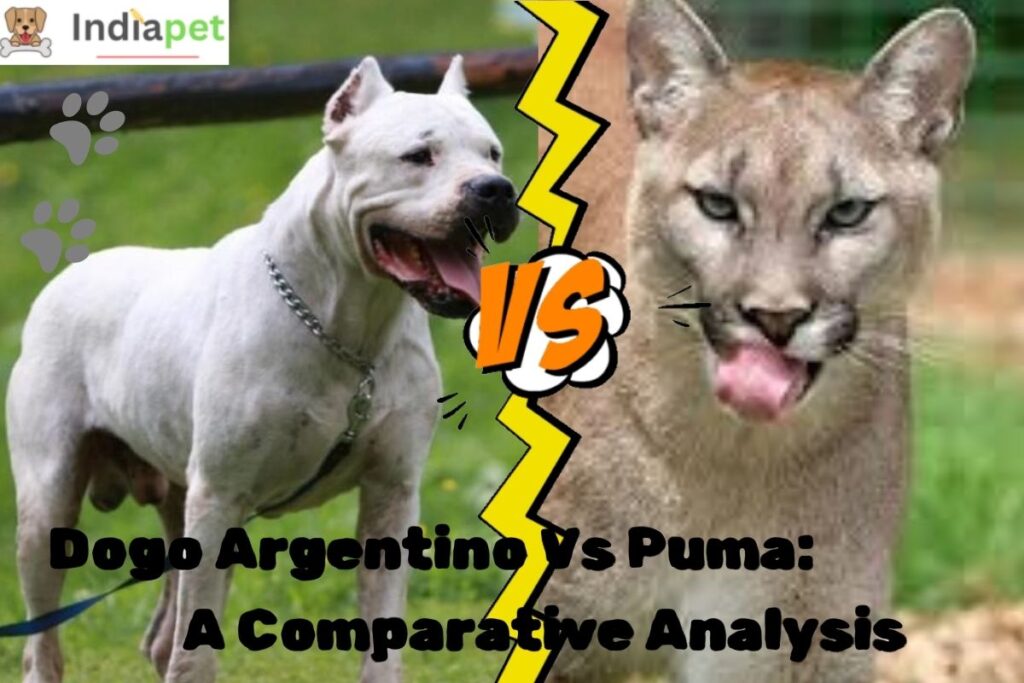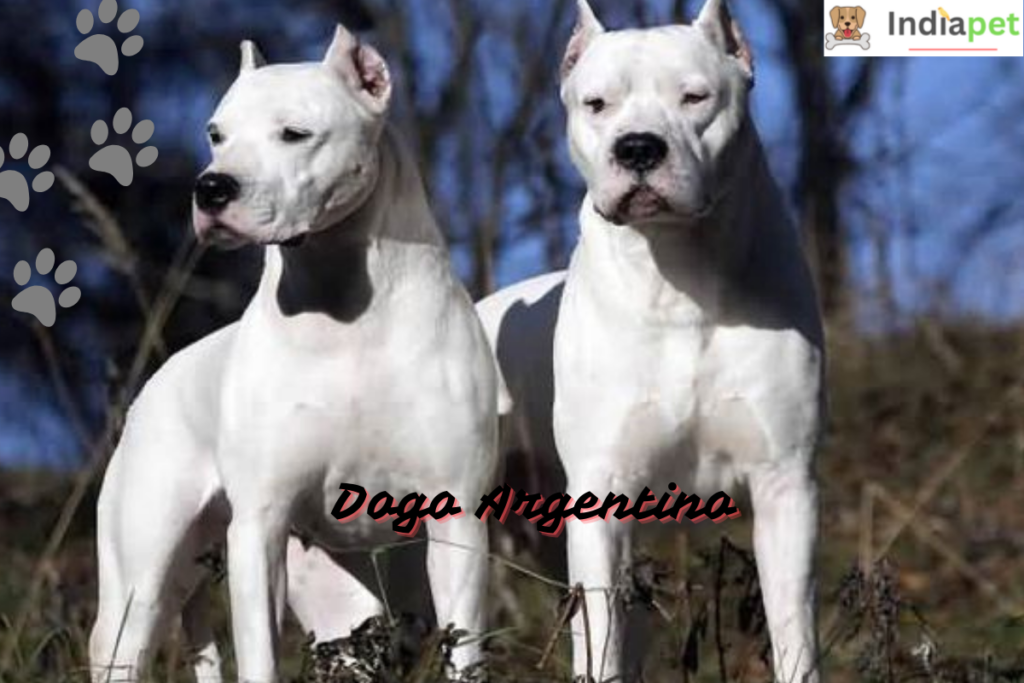Dogo Argentino vs Puma discusses the differences between domestic animals and wild predators; two interesting subjects of comparison are the Dogo Argentino and the Puma.
The Dogo Argentino, a powerful and loyal domestic breed, and the Puma, an agile and solitary wild cat, offer unique insights into the diverse world of carnivorous mammals. This blog highlights the physical characteristics, nature, and various traits of both species to highlight their distinctive and fascinating qualities.
Dogo Argentino Vs Puma

Physical Characteristics
Dogo Argentino:
- Weight: 80-100 pounds
- Size: 24-27 inches in height at the shoulder
- Color Coat: The Dogo Argentino has a short, smooth, and all-white coat. Some individuals may have a black spot on the head, but this is not common.
- Agile Build: The Dogo Argentino has a muscular and athletic build designed for endurance and strength. They have a powerful neck, broad chest, and strong legs, making them capable of great agility and speed.
Puma:
- Weight: 64-220 pounds (varies significantly depending on sex and geographic location)
- Size: 24-35 inches in height at the shoulder; body length of 3.25-5.25 feet, with an additional tail length of 2-3 feet
- Color Coat: Pumas have a uniform tan or tawny coat, which helps them blend into their natural environment. Their fur is short and dense, providing protection and camouflage.
- Agile Build: Pumas have a sleek and powerful build, with a flexible spine and strong hind legs designed for incredible leaps and sprints. Their body is adapted for stealth and speed, essential for hunting.
Nature
Dogo Argentino:
- Temperament: The Dogo Argentino is known for its loyalty, courage, and protective nature. They are affectionate with family members and can be gentle and loving. However, they are also known for their strong prey drive and territorial instincts, which can make them wary of strangers and other animals.
- Bark: Dogos are vocal dogs, using barking as a means of communication and alerting their owners to potential threats. Their bark is deep and powerful, serving as an effective deterrent.
- Nutrition: Dogos require a balanced diet rich in protein to maintain their muscular build. High-quality dog food supplemented with raw meat, fish, and vegetables is ideal for their nutrition.
- Strength: The Dogo Argentino is incredibly strong, with a powerful bite force and muscular physique. They were bred for big game hunting and had the strength and endurance to match.
- Adaptability: Dogos are adaptable but require a large, secure yard to roam and exercise. They can live in various climates but are best suited for active households with plenty of outdoor space.
- Trainability: The Dogo Argentino is intelligent and trainable but requires firm, consistent training from an experienced owner. Early socialization and obedience training are crucial to managing their strong-willed nature.
Puma:
- Temperament: Pumas are solitary and elusive predators. They are territorial and prefer to avoid human interaction. Their behavior is driven by instincts for hunting and survival, making them independent and wary.
- Bark: Pumas do not bark like dogs but communicate through various vocalizations, including growls, purrs, chirps, and screams. Their vocalizations are used for communication during mating or when defending territory.
- Nutrition: As obligate carnivores, pumas primarily hunt and eat large prey such as deer, elk, and wild boar. Their diet consists entirely of meat, which they need to maintain their energy and strength.
- Strength: Pumas are exceptionally strong, with powerful jaws and sharp claws. They are capable of taking down large prey with precision and agility. Their muscular build and powerful limbs allow them to leap great distances.
- Adaptability: Pumas are highly adaptable and can be found in various habitats, including forests, mountains, deserts, and grasslands. They are solitary animals that require large territories to hunt and thrive.
- Trainability: As wild animals, pumas are not trainable in the same way domestic dogs are. Their behavior is instinctual, and they do not respond to training or commands like domesticated animals.
Conclusion: Dogo Argentino Vs Puma
Comparing the Dogo Argentino and the Puma provides a fascinating look at the differences between a domesticated breed bred for hunting and protection and a wild predator developed to survive and hunt in the wild.
The Dogo Argentino is a powerful, loyal, and trainable domestic breed. Their physical characteristics and temperament make them excellent guard dogs and loyal family companions, provided they are given proper training and socialization. They require an active lifestyle, a balanced diet, and a safe environment to thrive.
The Puma, on the other hand, is a solitary and elusive wild predator. Their strength, agility, and adaptability make them formidable hunters in a variety of environments. Unlike the trainable Dogo Argentino, Pumas rely solely on their instincts for survival and do not interact with humans in the same way.
While both animals share some physical characteristics, their nature and roles in the animal kingdom are very different. The Dogo Argentino is a testament to human ingenuity in creating powerful and loyal companions, while the Puma remains a symbol of wild strength and freedom. Understanding these differences helps us appreciate the unique qualities of each species and their place in our world.
Frequently Asked Questions: Dogo Argentino Vs Puma
What are the main differences between the Dogo Argentino and the Puma?
The Dogo Argentino is a pet dog breed known for its loyalty, strength, and protective nature. In contrast, the Puma is a wild cat known for its agility, stealth, and solitary behavior.
Can the Dogo Argentino and the Puma live together in the same environment?
Dogo Argentino and the Puma to live together in the same environment. Dogos are pets that thrive in human homes, while Pumas are wild predators that require vast territories and should not be kept as pets.
What is the average weight of the Dogo Argentino compared to the Puma?
The Dogo Argentino typically weighs between 80 and 100 pounds, while the Puma can weigh between 64 and 220 pounds, depending on its gender and geographic location.
How do the Dogo Argentino and Puma compare in size?
The Dogo Argentino is approximately 24-27 inches tall at the shoulder, while Pumas are typically 24-35 inches tall at the shoulder, with a body length of 3.25-5.25 feet and an additional tail length of 2-3 feet.
What are the coat colors of the Dogo Argentino and Puma?
The Dogo Argentino’s coat is short, smooth, completely white, sometimes with a black spot on the head. The Puma’s coat is a uniform tan or tawny color that helps them blend into their natural surroundings.
How is the Dogo Argentino’s temperament different from that of the Puma?
Dogo Argentinos are loyal, courageous, and protective, making them excellent family companions and guard dogs. Pumas are reclusive, elusive, and territorial wild predators that avoid human contact.




![10 Low-Maintenance Dog Breeds In The World [UPDATED 2025]](https://indiapet.in/wp-content/uploads/2024/07/10-Low-Maintenance-Dog-Breeds-In-The-World-8-150x150.png)
